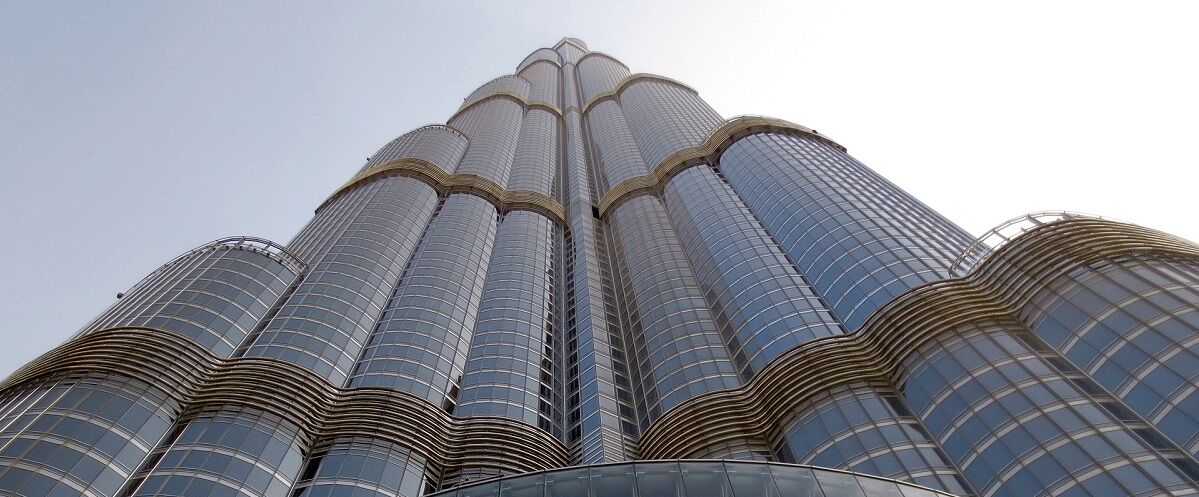Burj Khalifa
With its 828-metre height and iconic shape, it is the tallest skyscraper in the world.

A monument, a jewel, an icon - that is how it is called. Over 828 m, the skyscraper rises into the sky: the Burj Khalifa, commissioned by the Emir of Dubai himself. Cost: $1.1 billion.
The Burj Khalifa towers gracefully above the skyline of the Gulf region. The structure is characterised by a magnificent glass facade, a window area of 83,600 m² and a total exterior area of 111,500 m². This is equivalent to 18 football pitches! Given Dubai's aggressive sea climate with its high humidity and desert storms, the façade needs to be well maintained. This is quite a job at the Burj Khalifa and it is still done by hand! A round of window washing takes an estimated 3 to 4 months.
BUILDING MAINTENANCE UNITS
To simplify maintenance of the façade, fifteen mobile units called Building Maintenance Units (BMU) have been installed throughout the tower. These units are attached to the tubes around the tower. At five different levels, nine curved tubes are attached to the façade entirely around the tower. Seven of these are purely decorative. The other two are heavier and stronger and also serve as rails for the BMU unit that lowers the platform for the window washers. In this way, every square metre of the tower surface can be reached.

11 KM OF BENT STAINLESS STEEL
A total of over 1,200 tubes made of ground stainless steel (316L) with a diameter of 273 mm and a total length of 11,000 metres were supplied by our client. The pipes with a decorative function had a wall thickness of 3 mm, the pipes to which the maintenance units were connected had a wall thickness of 8 and 12.5 mm.
Kersten bent all the tubes to the requested radius, and then cut them to size in 3,870 sections with a length of 180 - 300 cm. Slots were cut in the tubes with a cutting robot and brackets were welded to the tubes. A very precise process because everything is exactly in the right place against the attachment point on the tower. The surface requirements were very strict and so the tubes were professionally reground after bending and machining.
After the bent parts were ready to install, they were carefully packed so that no damage could occur during shipping from Kersten in Wanssum (Netherlands) to Dubai. It took 50 sea containers to ship the assembled segments to Dubai. There, they could be directly attached to the tower by our client.